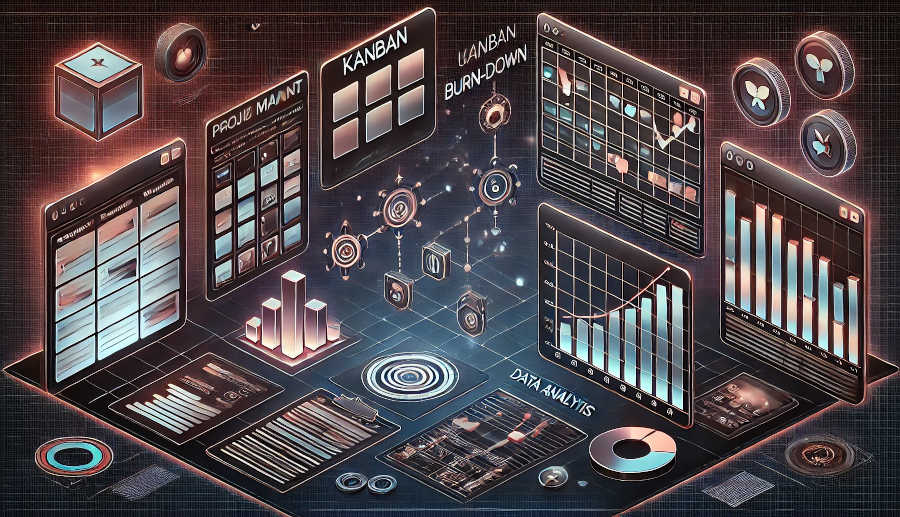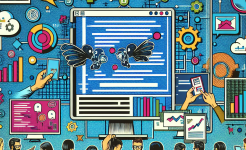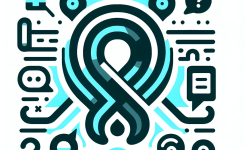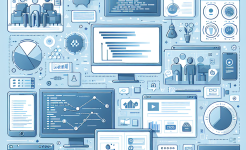Understanding the Importance of Customer Collaboration
Customer collaboration in Agile iterative development is not just about gathering requirements at the beginning of a project. It's an ongoing process that involves continuous communication, feedback, and co-creation. By involving customers throughout the development cycle, teams gain a deeper understanding of their pain points, expectations, and goals. This understanding helps in aligning the product features and functionality with what the customers actually need. For example, in the development of a mobile banking application, through regular interaction with customers, the development team might discover that users are more concerned about the security of transactions and the ease of account management rather than some of the fancy features initially planned. This insight can lead to a re-prioritization of tasks and resources, ensuring that the final product better serves the customers.
Moreover, customer collaboration builds trust between the development team and the customers. When customers see that their opinions are valued and incorporated into the product, they are more likely to have faith in the development process. This trust can lead to a more positive relationship, which is beneficial for both parties. In a business context, satisfied customers are more likely to recommend the product or service to others, leading to increased business opportunities. Additionally, early and continuous customer involvement can help in identifying potential issues or risks early on, allowing the team to address them before they become major problems. This proactive approach can save time, resources, and prevent costly rework.
Another aspect of the importance of customer collaboration is that it enables the development team to stay ahead of the competition. In today's fast-paced market, customer needs and preferences can change rapidly. By maintaining a close relationship with customers, the team can quickly adapt to these changes and incorporate new features or improvements into the product. This agility gives the product a competitive edge, as it can better meet the evolving demands of the market. For instance, in the e-commerce industry, customers' expectations regarding delivery times, return policies, and personalized shopping experiences are constantly evolving. A development team that collaborates effectively with customers can make timely adjustments to their platform, keeping them in the lead compared to competitors who are slower to respond.
Establishing Clear Communication Channels
One of the first steps in effective customer collaboration is establishing clear communication channels. This includes both formal and informal channels. Formal channels such as regular meetings, status reports, and requirement documentation provide a structured way of sharing information. For example, weekly or bi-weekly meetings can be scheduled where the development team presents the progress made, any challenges faced, and gets feedback from the customers. These meetings should have a clear agenda and time limit to ensure that they are productive. Status reports can be used to provide a detailed overview of the project's progress, including completed tasks, upcoming tasks, and any changes in the project scope. Requirement documentation, on the other hand, serves as a reference point for both the team and the customers, ensuring that everyone is on the same page regarding the product's features and functionality.
Informal communication channels are equally important. Tools like instant messaging platforms, email, and even face-to-face conversations in an open office environment can facilitate quick and easy communication. For instance, if a customer has a small question or a minor suggestion, they can use an instant messaging platform to reach out to the development team immediately. This kind of real-time communication can prevent misunderstandings and keep the development process moving smoothly. Additionally, an open office environment where the development team and the customers can interact casually can foster a more collaborative atmosphere. It allows for spontaneous discussions and the sharing of ideas that might not happen in a more formal setting.
In addition to choosing the right communication channels, it's crucial to ensure that the communication is two-way. The development team should not only be sharing information with the customers but also actively listening to their feedback. This means creating an environment where customers feel comfortable expressing their opinions, concerns, and ideas. The team should be receptive to different viewpoints and be willing to make adjustments based on the feedback received. For example, if a customer points out a usability issue in a prototype, the team should take it seriously and work on improving it. By maintaining this two-way communication, the development team can build a strong relationship with the customers and ensure that the product meets their expectations.
Defining Roles and Responsibilities
In any collaborative effort, it's essential to define the roles and responsibilities of each party clearly. In Agile iterative development, the development team, the product owner (who often represents the customer's interests), and the customers themselves all have distinct roles. The development team is responsible for the technical implementation of the product. They write the code, conduct testing, and ensure that the product meets the required quality standards. For example, in a software development project, the developers are in charge of coding the various features of the application, while the testers are responsible for finding and reporting any bugs or issues. The team also needs to work closely with the product owner to understand the requirements and prioritize the tasks.

The product owner plays a crucial role in bridging the gap between the customers and the development team. They are responsible for gathering and prioritizing the customer requirements, creating the product backlog, and communicating the product vision to the team. The product owner should have a deep understanding of the customers' needs and the business goals. They need to make decisions regarding which features should be developed first and how the resources should be allocated. For instance, if the business goal is to increase user engagement, the product owner might prioritize features that enhance the user experience, such as personalized recommendations or social sharing capabilities. The product owner also needs to communicate with the customers regularly to keep them informed about the project's progress and get their feedback on the product backlog.
The customers, on the other hand, are responsible for providing clear and detailed requirements, participating in the feedback process, and validating the product. They need to be actively involved in the development process, especially during the requirements gathering and review stages. For example, customers can provide use cases or scenarios that illustrate how they would use the product in real-life situations. This helps the development team in understanding the context and functionality requirements. During the review stages, customers should carefully evaluate the product and provide honest feedback. Their input is crucial in ensuring that the final product meets their expectations and is fit for purpose.
Conducting Regular Feedback Sessions
Regular feedback sessions are a key component of effective customer collaboration in Agile iterative development. These sessions provide an opportunity for the customers to review the work done by the development team and provide their input. The feedback sessions should be scheduled at regular intervals, such as after each sprint or iteration. During these sessions, the development team can present the new features or improvements made, demonstrate the functionality of the product, and share any challenges they faced. The customers can then ask questions, provide feedback on the usability, functionality, and overall design of the product.
To make the feedback sessions more productive, it's important to create a positive and open atmosphere. The development team should encourage the customers to be honest and transparent in their feedback. They should not be defensive if the customers point out any issues or areas for improvement. Instead, they should view the feedback as an opportunity to learn and make the product better. For example, if a customer mentions that a particular feature is too complicated to use, the team can take this as a cue to simplify the design. The team can also ask clarifying questions during the feedback session to ensure that they understand the customers' concerns fully.
After the feedback session, it's crucial to document the feedback and create an action plan. The development team should prioritize the feedback based on its impact on the product and the effort required to implement the changes. They should then assign tasks to the relevant team members and set deadlines for completing the changes. By following up on the feedback in this way, the development team can show the customers that their input is valued and that they are committed to improving the product. This process of continuous feedback and improvement is what makes Agile iterative development so effective in delivering products that meet customer needs.
Building a Collaborative Culture
Building a collaborative culture is essential for long-term success in customer collaboration within Agile iterative development. A collaborative culture is one where everyone, including the development team, the product owner, and the customers, feels valued, respected, and empowered to contribute. This starts with the leadership of the organization. Leaders should promote collaboration by setting an example, encouraging open communication, and rewarding teamwork. For example, leaders can participate in some of the customer meetings or feedback sessions to show their support for the collaborative process.
The development team should also be encouraged to work together closely. This can be achieved through team-building activities, knowledge sharing sessions, and creating an environment where everyone feels comfortable asking for help. When the team members work well together, they can better understand the customers' needs and deliver a higher quality product. For instance, in a cross-functional team, the developers, designers, and testers can collaborate to ensure that the product not only functions well but also has an appealing user interface.
Finally, the relationship between the development team and the customers should be based on mutual trust and respect. The team should strive to understand the customers' business goals and challenges, while the customers should respect the technical expertise of the team. By building this kind of relationship, both parties can work together effectively to create a product that meets the customers' needs and drives business success.
In conclusion, effective customer collaboration is vital for the success of Agile iterative development. By understanding the importance of customer collaboration, establishing clear communication channels, defining roles and responsibilities, conducting regular feedback sessions, and building a collaborative culture, development teams can create products that truly meet customer needs. This approach not only leads to satisfied customers but also gives the organization a competitive edge in the market. It's a continuous process that requires commitment and effort from all parties involved, but the rewards in terms of product quality, customer satisfaction, and business growth are well worth it. As the business landscape continues to evolve, the ability to collaborate effectively with customers in an Agile iterative development framework will become even more crucial for organizations to thrive.
ARTICLE TITLE :Agile iterative development: How to conduct effective customer collaboration ,AUTHOR :ITpmlib

















